How to build hazel plant supports – for an English cottage garden look
Learn how to use sustainable, natural materials to build support structures for your climbing plants and tall perennials this year
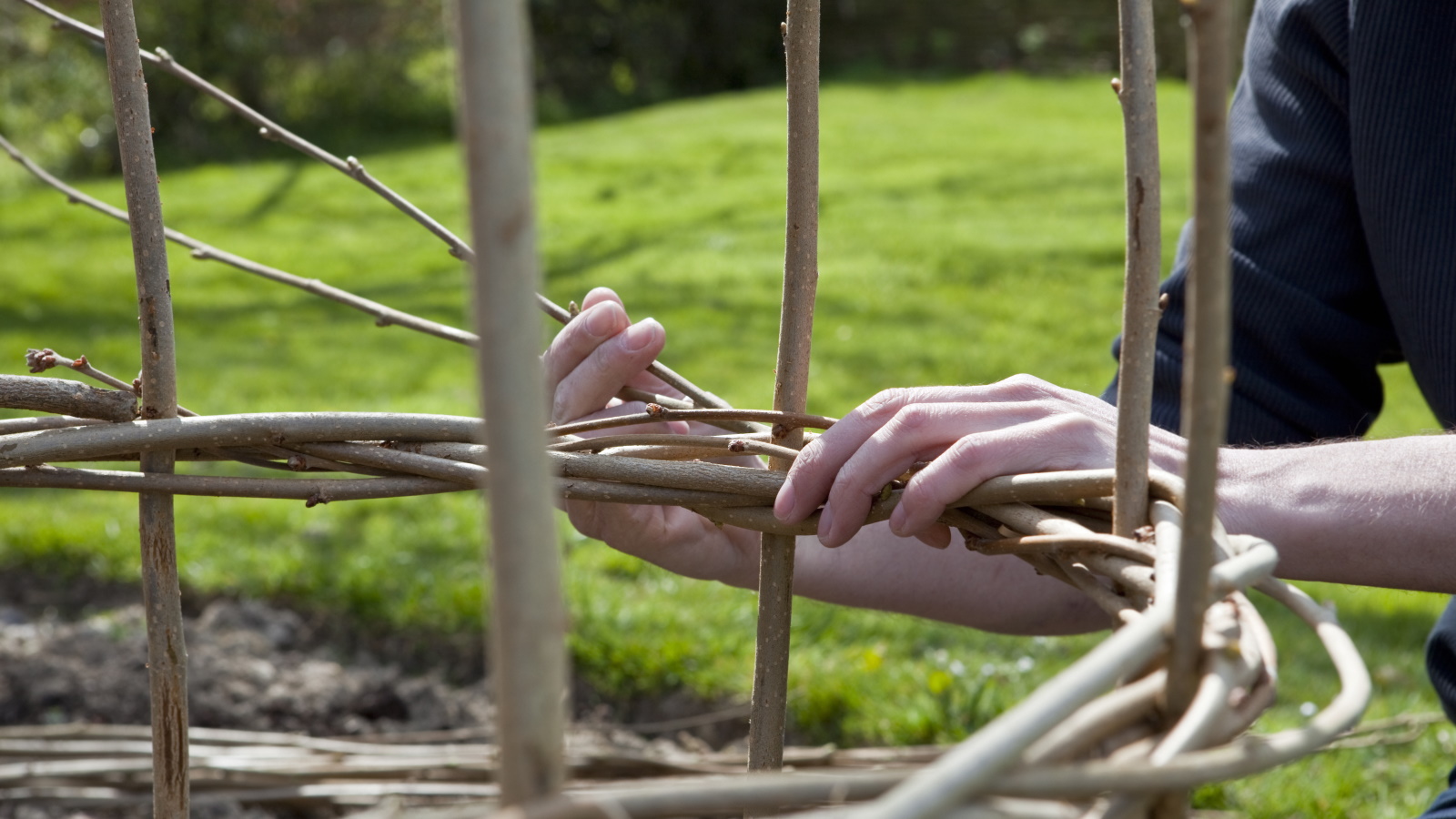

Late winter is the ideal time to build plant supports and structures for the growing season ahead. When most perennials and bulbs are yet to arise, and the borders are stripped of greenery and color, take the time to create something special for your climbing roses and sweet peas to ramble over.
As a gardener, I have built plant supports of all shapes and sizes in several gardens across Wales, England and Tuscany, and doing so never fails to add romance to a garden border.
Using sustainably sourced wooden rods is one way to do this, creating natural plant supports that help to produce a cottage garden look. In addition, for gardeners wondering how to create a modern cottage garden look, structures in your borders that appear natural and artisanal can help, working in harmony with the wider landscape.
Creating these structures takes time and some forward planning is required, but come summer when your perennials and climbers are growing through and over your creations, you will be glad to have done this preparatory work.
Plant supports are important as they provide essential protection for annual and perennial planting in the spring and summer months. Gardeners, myself included, can often forget that high winds are not restricted to fall and winter, and sadly, they can be incredibly destructive. One strong gust is all it takes to topple your prized perennials and top-heavy flowers.
Discover how to create simple but effective hazel plant supports in your garden borders this year.
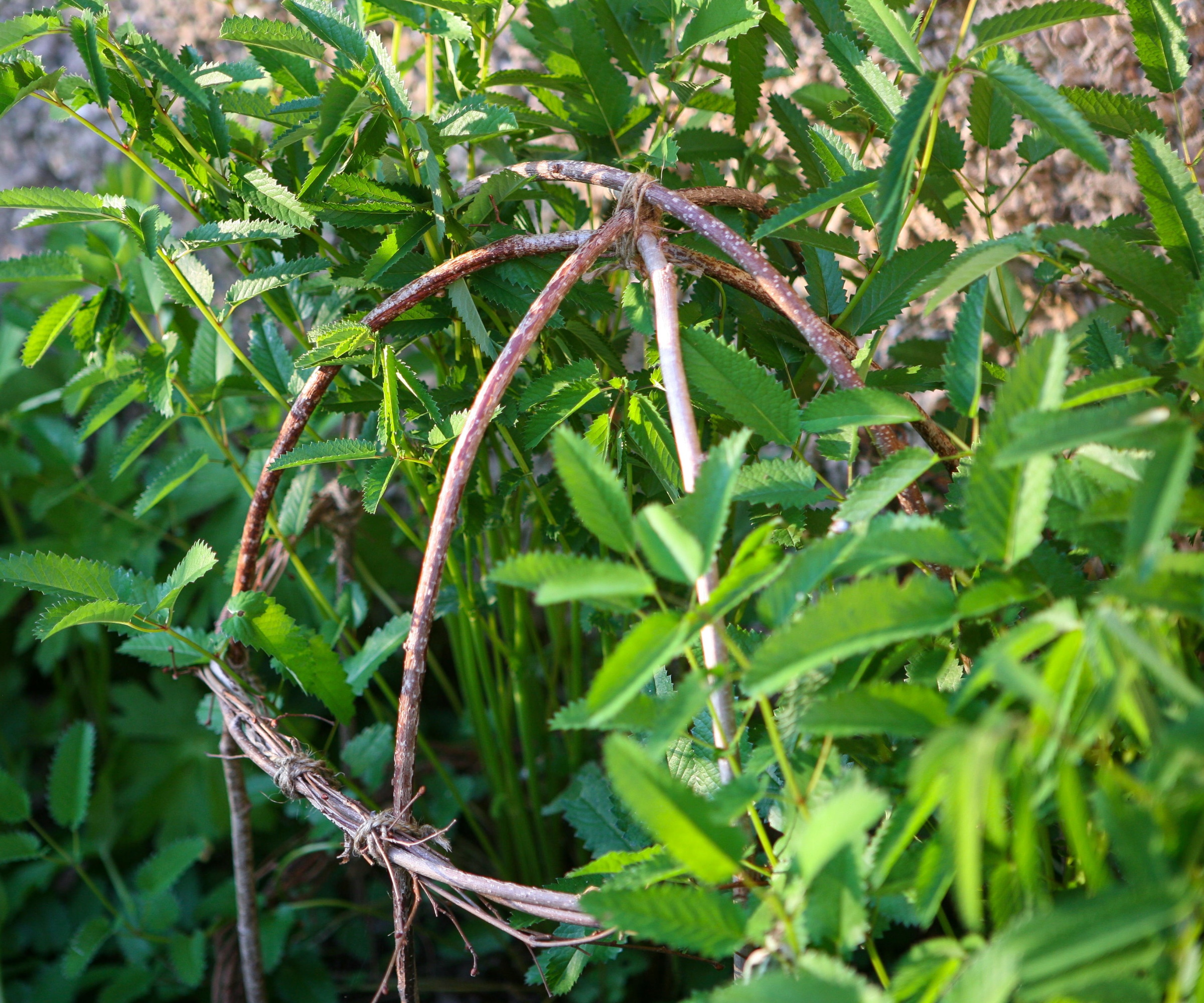
How to build hazel plant support
Plant supports are important as they guide and protect your planting in the spring and summer months. Building your own plant supports by using sustainable and natural materials, like hazel, not only gives your perennials and climbers the structure they need but can also help to create an attractive cottage garden look.
Why is hazel a good material to use?
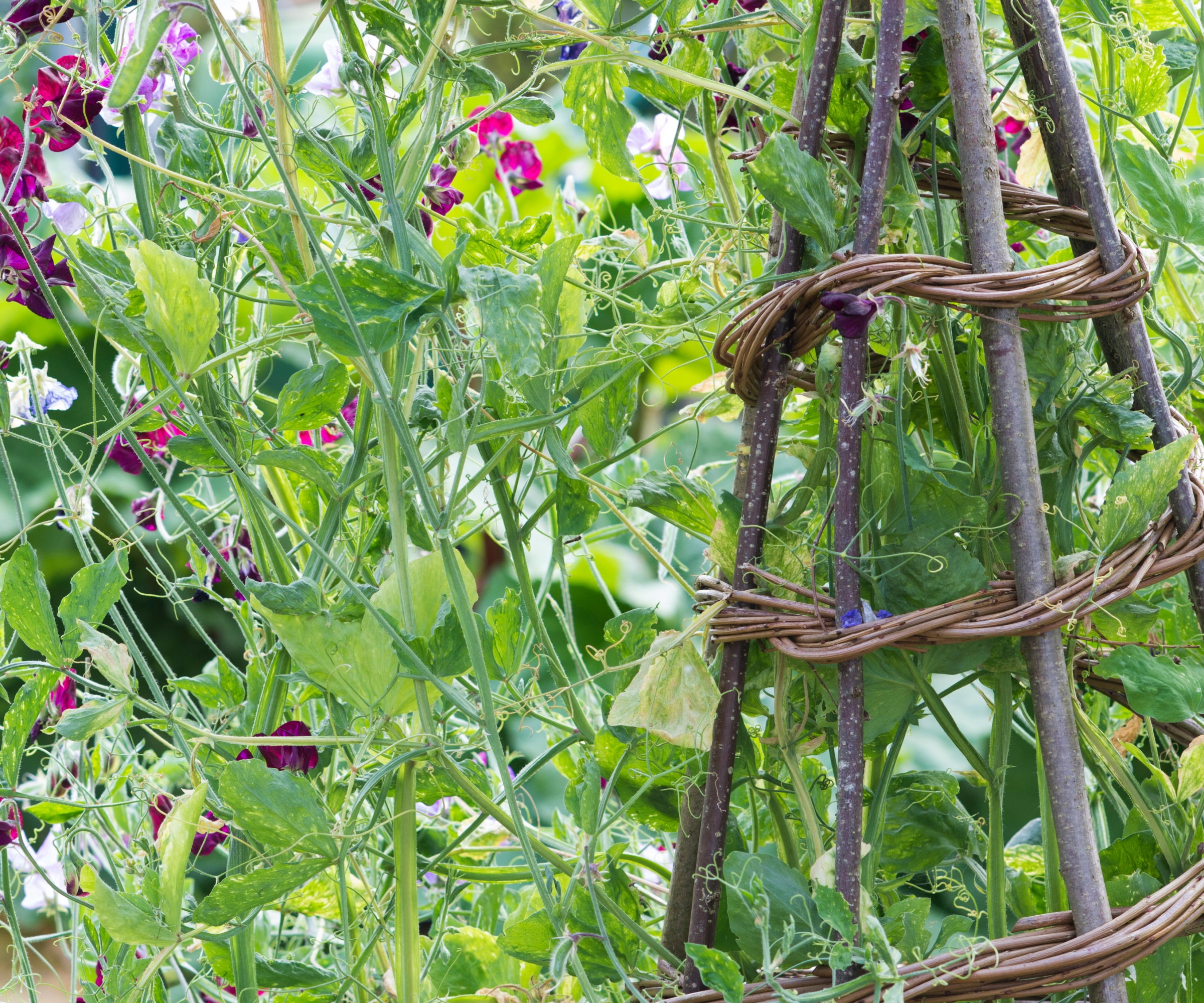
Hazel is considered by gardeners to be the best material to make plant supports. It is flexible yet strong, offering both form and function when creating natural, often rounded shapes.
Whether you want to build arches, obelisks, domes, or perhaps something more outlandish, hazel can be easily manipulated into organic shapes that complement your borders and backyard. As a natural material, it blends with the surroundings, evoking an artisanal, cottage garden look, and I think these structures enhance any garden space.
Sourcing hazel should not be too difficult, and your local garden store may sell hazel rods or know of a supplier. Hazel is usually cut, or coppiced, in autumn and winter, whilst the trees are still dormant. Coppicing is a sustainable, and ancient practice, in that by cutting branches and stems down to the base of the tree, you stimulate new growth to be used in subsequent years.
The size and width of the hazel rods that you require will be determined by what you want to create. I would generally be looking for straight rods of hazel that gradually become thinner. The thicker end, the base, will provide good support and grounding, whilst the thinner, wispier end, will be more malleable, and help to create arches and other shapes at the top of your plant supports.
Once you have sourced your hazel rods, you are ready to get creative.
How to build hazel plant supports
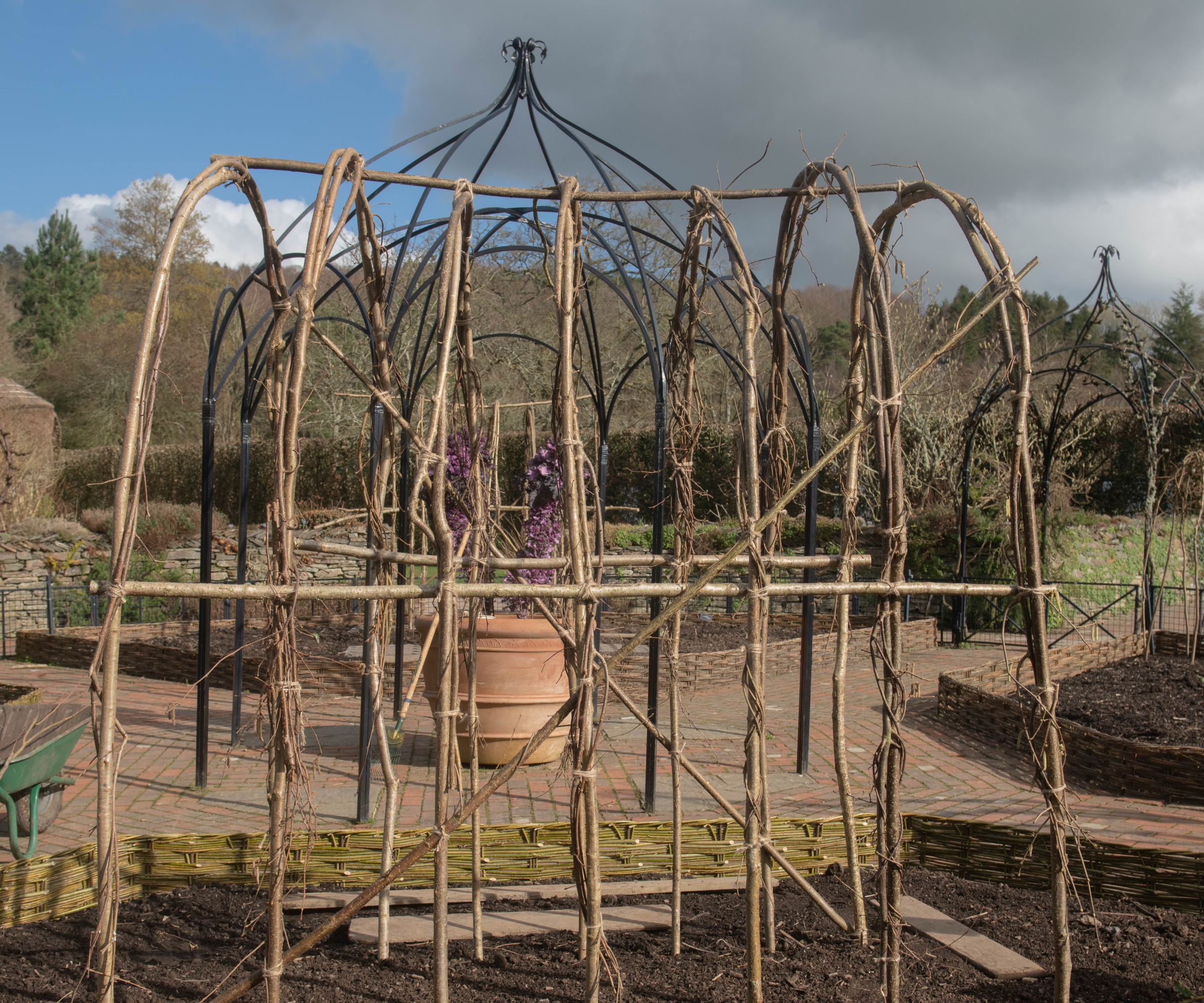
Firstly, identify the areas in your backyard where you want to build your plant supports. For example, if you have a peony that is shooting, creating a dome that is 3 feet high is a great support for these top-heavy spring blooms. Alternatively, you might be building supports for annuals that are still growing safely in the warmth of the greenhouse.
For a simple dome shape, I would choose 4 to 6 rods that are of equal straightness and width. Using clean, sharp secateurs, such as these pruning shears from Walmart, carefully remove any side shoots from the bottom 10-15 inches of the rods. Once cleared, make a diagonal cut at the bottom of the rod. This will make it easier to force the rod into the ground.
Following this, carefully position the rods to create a circular shape, ensuring that each rod is paired with another rod found opposite. If you are creating a shape around a plant, such as a peony, ensure that the plant is in the middle of this circle. Once you are happy with the spacing, firm down the rods into the ground, ensuring that at least 5 inches of each rod is underground, helping to secure the structure.
Slowly manipulate each rod, and in my experience, working slowly generates far better results, carefully bending each rod to meet the other found opposite. At this stage, you might find that you want the plant support to be slightly shorter. This is not a problem, and if you need to reduce the size of the rods, do so by lifting the rods and cutting at the base, rather than removing the thinner material at the top.
If the rods are slightly stiff or rigid, I was taught many years ago to bend the hazel slightly, gently pushing it against your leg so as to release the tension, thus making it slightly easier to manipulate the hazel into the desired shape. Once you are happy with the arched shape and the point at which the rods meet, weave the hazel rods together, creating a natural bond by tying them together. At this point, I would add some additional support by using twine to tie the bent rods together, using something like this twine from Walmart.
Once you have completed the first arch, the subsequent arches become easier, and as you tie these together, you increase the stability and strength of the structure. When complete, I always find that it helps to use any thin side shoots or additional stems of hazel to create at least one horizontal band around the structure, adding greater support for your plants as they grow.
The same principles apply to archways or other shapes, and the more plant supports you build, the more confident you will be to create unique hazel masterpieces.
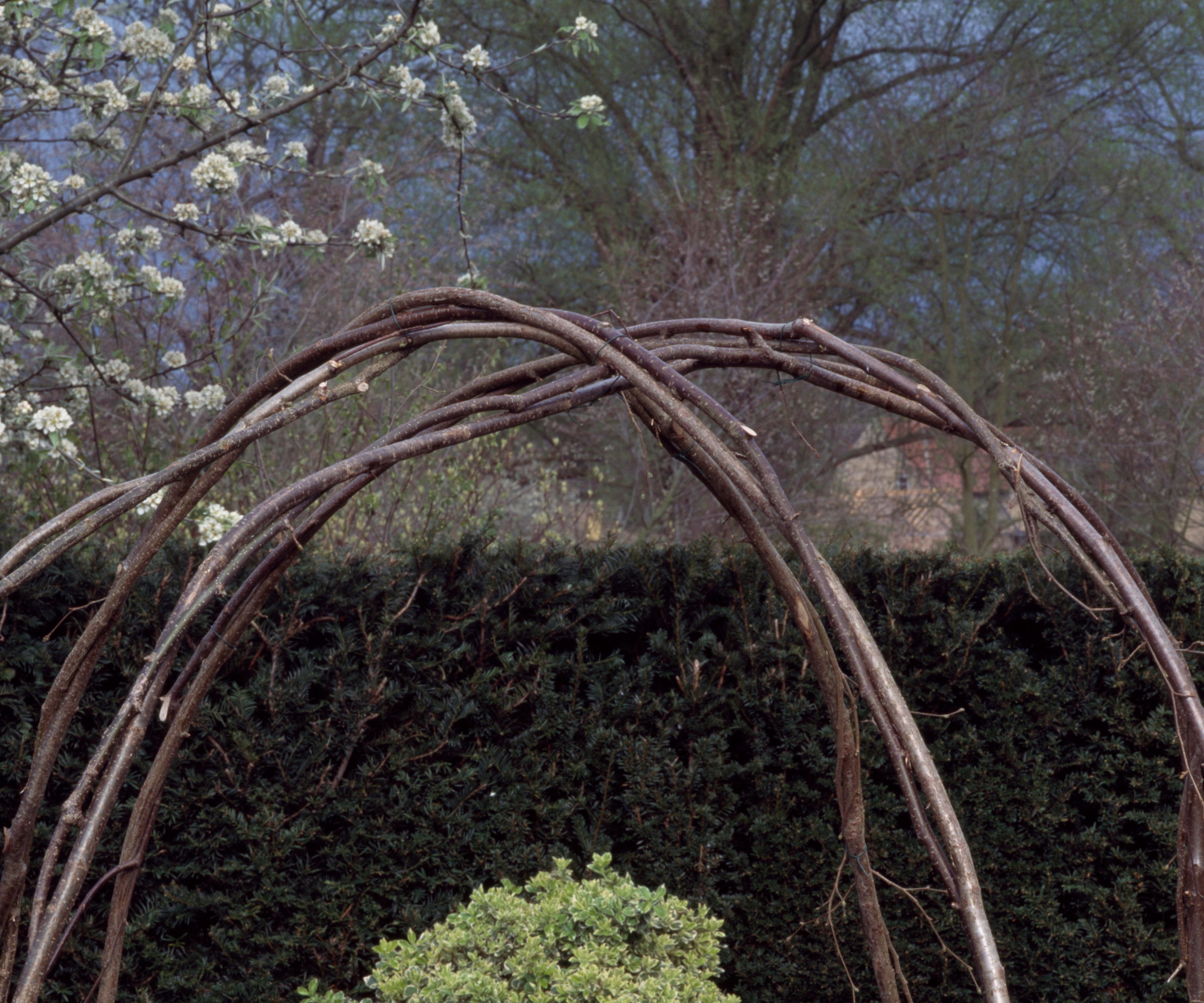
FAQs
Can I use other coppiced wood to build plant supports?
Hazel is often considered the most effective coppiced wood to use for plant supports, due to its strength and flexibility. Young birch stems can also be used, as can willow. Whatever material you opt for, ensure that it has been sustainably sourced from your locality. If in doubt, consult your local garden store or look online for a local supplier.
How long will my hazel structure last for?
Hazel structures can last up to two years, although they will become brittle over the growing season and the warmer months. Eventually, they will begin to break and will need replacing. In order to cut back the plants and mulch the borders in the fall, you might find that it is easier to remove the hazel structures each year, and replace them as necessary.
Creating hazel structures in your yard will not only support your plants in the growing season ahead but do so in a way that enhances the look and feel of your outdoor space. Consider other ideas for supporting climbing plants, creating even more vertical interest in your yard this year.
Sign up to the Homes & Gardens newsletter
Design expertise in your inbox – from inspiring decorating ideas and beautiful celebrity homes to practical gardening advice and shopping round-ups.

Thomas is a Content Editor within the Gardens Team at Homes and Gardens. He has worked as a professional gardener for both public spaces and private estates, specializing in productive gardening, growing food and flowers. Trained in Horticulture at the Garden Museum, he has written on gardening and garden history for various publications, including The English Garden, Gardens Illustrated, Hortus, The London Gardener and Bloom. He has co-authored a Lonely Planet travel book, The Tree Atlas, due out in 2024.
-
 7 of the best tomatoes for growing in pots - expert growers pick their top varieties ideal for large harvests from containers
7 of the best tomatoes for growing in pots - expert growers pick their top varieties ideal for large harvests from containersYou can enjoy bumper homegrown harvests in small spaces
By Drew Swainston Published
-
 Drew Barrymore creates a 'balanced' kitchen in 4 easy steps – her rules will make your small, compact countertops feel beautiful
Drew Barrymore creates a 'balanced' kitchen in 4 easy steps – her rules will make your small, compact countertops feel beautifulDrew proves that with the right styling (and chic appliances), you can make even the smallest of kitchens look harmonious
By Hannah Ziegler Published